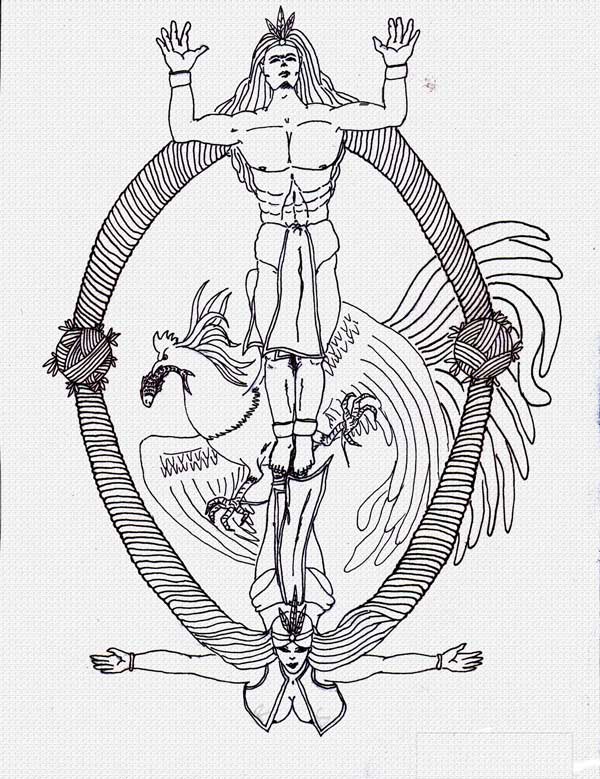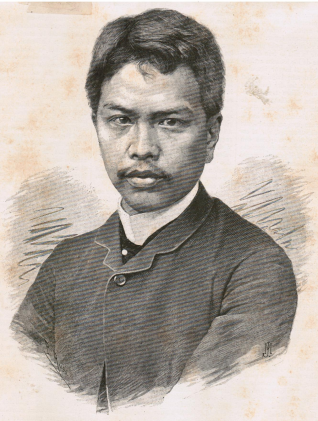The TAGALOGS Origin Myths:
Bathala the Creator
Who is BATHALA?
In ancient mythology among the Tagalogs, there was a creator, a supreme god. He was known as Bathala Maykapal or Lumikha. According to F. Landa Jocano’s Outline of Philippine Mythology (1969), Bathala is the grand conserver of the universe – the caretaker of nature and the creatures of the earth. “Hence the beautiful word “bahala” or “mabahala” meaning “to care.” From this evolved the Filipino attitude of “bahala na” or “Let Bathala take care of it” which gives a person tremendous courage in the face of danger.”
We can only speak about the worship of Bathala with varying degrees of certainty. Most of the foundations of Philippine Mythology are rooted in documentation by the Spanish. This creates a bit of a dilemma. The same documentation that re-enforces mythological stories about gods and creation are one and the same with the documentation that is being used to discredit belief in folkloric creatures (I’ll speak more on this in a future article). Using this documentation, we know that pre-Spanish Tagalogs on Luzon “worshipped” Bathala, the creator. We also know that, for a time, Bathala was incorporated into Christian teaching by the friars in order to assist with converting the population to Christianity.
“As for their sacrifices, each one of the natives, so far as I have seen, has in his house many idols, to whom they pray. They call God, Batala (Bathala), and the chief idol which they have is thus named; but others call him Diobata (Diwata) – at least among the Pintados (term used by Spanish to describe indigenous people with tattooed bodies in Cebu, Bohol, Samar and Leyte) they give him this name. The natives of this island (Luzon) usually call him Batala, and even consider him God of all creation. Accordingly, after the religious came to this land and commenced to preach the faith of Jesus Christ, and to baptize, the natives have not known how to give any other name in their language to God our Lord, except that of Batala.”
– Fernando Riquel – Endorsed: June 19, 1572, Manila

The Creation Story (Tagalog)
When the world first began there was no land, but only the sea and the sky, and between them was a kite. One day the bird which had nowhere to alight grew tired of flying about, so she stirred up the sea until it threw its waters against the sky. The sky, in order to restrain the sea, showered upon it many islands until it could no longer rise, but ran back and forth. Then the sky ordered the kite to alight on one of the islands to build her nest, and to leave the sea and the sky in peace.
Now at this time the land breeze and the sea breeze were married, and they had a child which was a bamboo. One day when this bamboo was floating about on the water, it struck the feet of the kite which was on the beach. The bird, angry that anything should strike it, pecked at the bamboo, and out of one section came a man and from the other a woman.
Then the earthquake called on all the birds and fish to see what should be done with these two, and it was decided that they should marry. Many children were born to the couple, and from them came all the different races of people.
After a while the parents grew very tired of having so many idle and useless children around, they wished to be rid of them, but they knew of no place to send them to. Time went on and the children became so numerous that the parents enjoyed no peace. One day, in desperation, the father seized a stick and began beating them on all sides.
This so frightened the children that they fled in different directions, seeking hidden rooms in the house—some concealed themselves in the walls, some ran outside, while others hid in the fireplace, and several fled to the sea.
Now it happened that those who went into the hidden rooms of the house later became the chiefs of the islands; and those who concealed themselves in the walls became slaves. Those who ran outside were free men; and those who hid in the fireplace became negroes; while those who fled to the sea were gone many years, and when their children came back they were the white people.
Bathala and his adversary, Sitan
Bathala’s adversary is believed to be “Sitan”, guardian of Kasamaan and the keeper of all souls therein. His task was to lead man to sin and destruction. The relationship between Bathala and Sitan was first documented by Juan de Plasencia in 1589. How much of this can be taken as certainty and how much is a Christian interpretation will always be up for debate, but the concept of “hell” certainly predates the Spanish arrival in the region. The Tagalogs “Kasamaan” may have more in common with Naraka – a place of temporary torment in Hinduism – than it does with the eternal damnation in Christianity.
“They said also that in the other life and mortality, there was a place of punishment, grief, and affliction, called casanaan (Kasamaan), which was “a place of anguish;” they also maintained that no one would go to heaven, where there dwelt only Bathala, “the maker of all things,” who governed from above. There were also other pagans who confessed more clearly to a hell, which they called, as I have said, casanaan; they said that all the wicked went to that place, and there dwelt the demons, whom they called sitan.”
Bathala and his adversary, Sitan
Bathala’s adversary is believed to be “Sitan”, guardian of Kasamaan and the keeper of all souls therein. His task was to lead man to sin and destruction. The relationship between Bathala and Sitan was first documented by Juan de Plasencia in 1589. How much of this can be taken as certainty and how much is a Christian interpretation will always be up for debate, but the concept of “hell” certainly predates the Spanish arrival in the region. The Tagalogs “Kasamaan” may have more in common with Naraka – a place of temporary torment in Hinduism – than it does with the eternal damnation in Christianity.
“They said also that in the other life and mortality, there was a place of punishment, grief, and affliction, called casanaan (Kasamaan), which was “a place of anguish;” they also maintained that no one would go to heaven, where there dwelt only Bathala, “the maker of all things,” who governed from above. There were also other pagans who confessed more clearly to a hell, which they called, as I have said, casanaan; they said that all the wicked went to that place, and there dwelt the demons, whom they called sitan.”
– Customs of the Tagalogs, Juan de Plasencia, O.S.F.; Manila, October 21, 1589
sources: the aswang project, clark (2013). Retrieved from https://www.aswangproject.com/bathala/






:max_bytes(150000):strip_icc():format(webp)/emilio-jacinto-portrait-1005304304-5c8017e646e0fb00011bf417.jpg)



